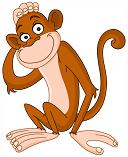Heraldry
| Royal corporation with authority to act on behalf of the Crown in matters of heraldry (in England, Wales and Northern Ireland) |
 |
College of Arms |
| Head of the College of Arms: a hereditary post, held since 1672 (and periodically before then) by the Dukes of Norfolk |
 |
Earl Marshal |
| Chief herald in Scotland |
 |
Lord Lyon King of Arms |
Colours
| Sable |
 |
Black |
| Azure |
 |
Blue |
| Or |
 |
Gold |
| Vert |
 |
Green |
| Murrey |
 |
Purple or red |
| Gules |
 |
Red |
| Argent |
 |
Silver (or white) |
Adjectives
These are the adjectives that are used to describe the attitudes of heraldic animals (the most familiar one being
"standing on one hind leg" – see below)
| Lying down |
 |
Couchant |
| Tail between legs |
 |
Coward |
| On all fours, walking across |
 |
Passant |
| Standing on one hind leg |
 |
Rampant |
| Looking back over one shoulder |
 |
Regardant |
| With head down |
 |
Urinant |
| Flying |
 |
Volant |
Other
| Tudor rose: number of lobes (or sets of petals) |
 |
5 |
| Left hand side |
 |
Sinister |
| Right hand side |
 |
Dexter |
| Band running from the bearer’s top right to bottom left, on a shield |
 |
Bend |
| Band running from the bearer’s top left to bottom right (sometimes said to signify illegitimacy) |
 |
Bend sinister |
| The formal description of a coat of arms, flag or similar emblem |
 |
Blazon |
| A V–shaped mark (inverted, more often than not) |
 |
Chevron |
| Lozenge, or (less commonly) fusil, mascle or rustre, are different types of (shape) |
 |
Diamond |
| Broad horizontal stripe |
 |
Fesse |
| Background of a flag or shield |
 |
Field |
| Heraldic symbol (a stylised iris flower) originally associated with the French monarchy – later the
Boy Scout movement |
 |
Fleur–de–lys |
| Urchin: country dialect (and heraldic) word for a |
 |
Hedgehog |
| A golden harp with silver strings, on a blue background ("Azure a harp Or, stringed Argent") is the coat
of arms – formally adopted in 1945 – of |
 |
Ireland |
| Usual position of the crest |
 |
On the helmet |
| Britain's commonest pub sign – the Red Lion ' comes from the coat of arms of |
 |
John of Gaunt |
| Mythical bird similar to a swallow or swift (e.g. on the coat of arms of Sussex) |
 |
Martlet |
| Heraldic badge of the Prince of Wales |
 |
Ostrich feathers (3) |
| Broad vertical stripe running the length of a shield |
 |
Pale |
| A Y–shaped charge on a shield (also means a cloth used to cover a coffin, or a piece of stiffened linen used to
cover the chalice at the Eucharist) |
 |
Pall |
| Diagonal cross (especially on the flag of Scotland) |
 |
Saltire |
| Escutcheon |
 |
Shield |
| Attires |
 |
Stag's antlers |
| Mullet |
 |
Star |
| Figures holding the shield at the sides, on a coat of arms |
 |
Supporters |
| Supporter that represents Scotland in the UK's Royal Coat of Arms (as opposed to the English lion) |
 |
Unicorn |
| Symbol chosen by Richard II to be worn by his knights |
 |
White hart |
| Two–legged dragon, with the tail of a serpent (ending in an arrow–head) – from the
Anglo–Saxon word for a serpent |
 |
Wyvern |
© Haydn Thompson 2017–19

